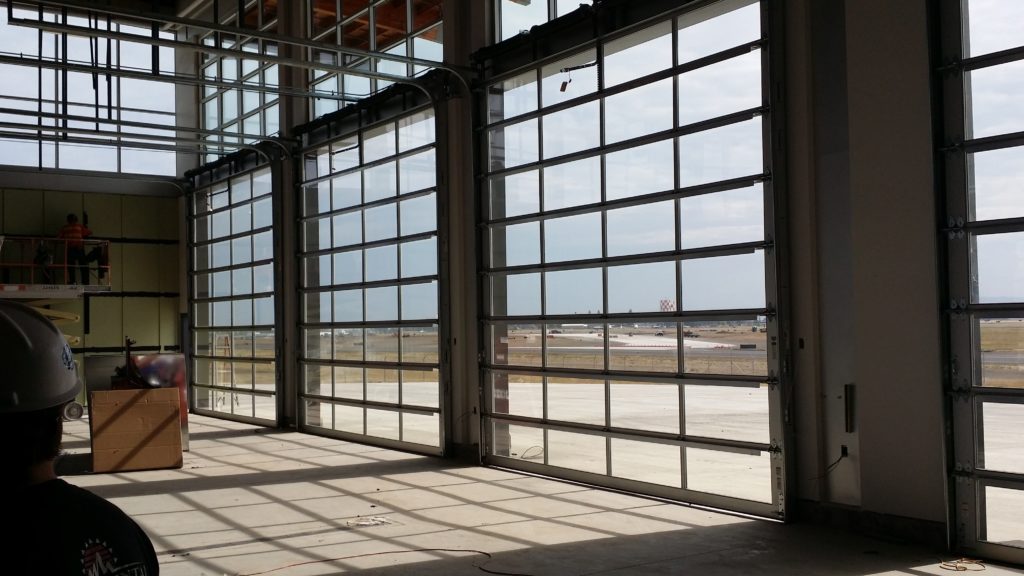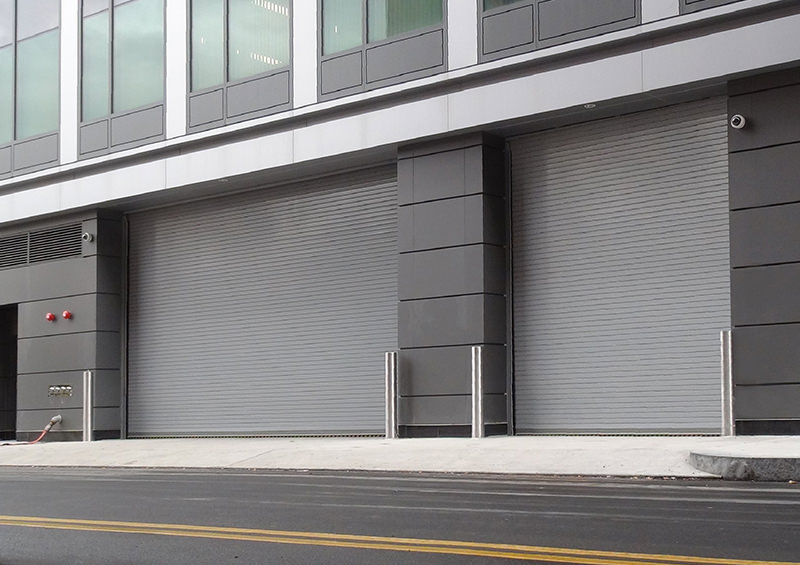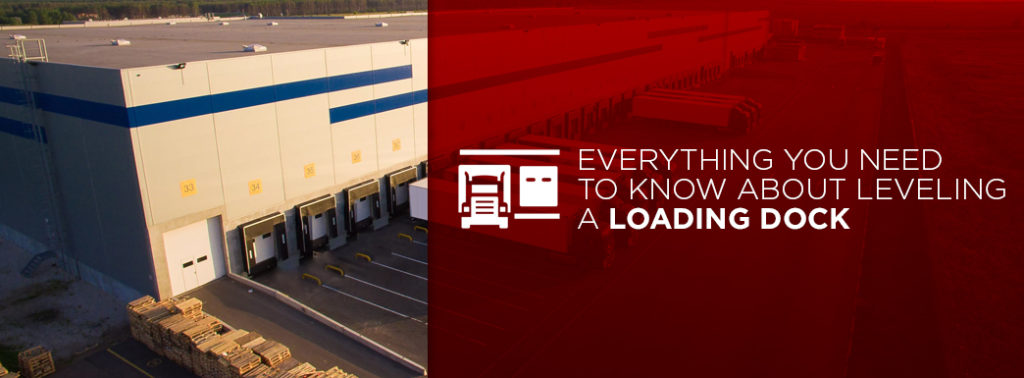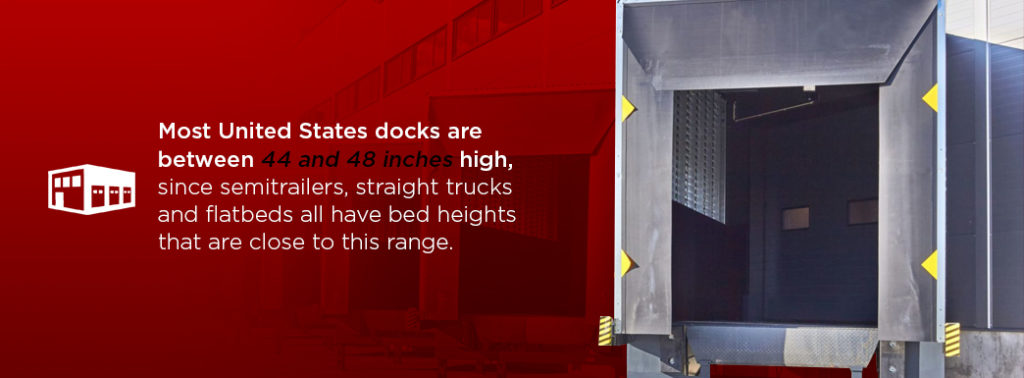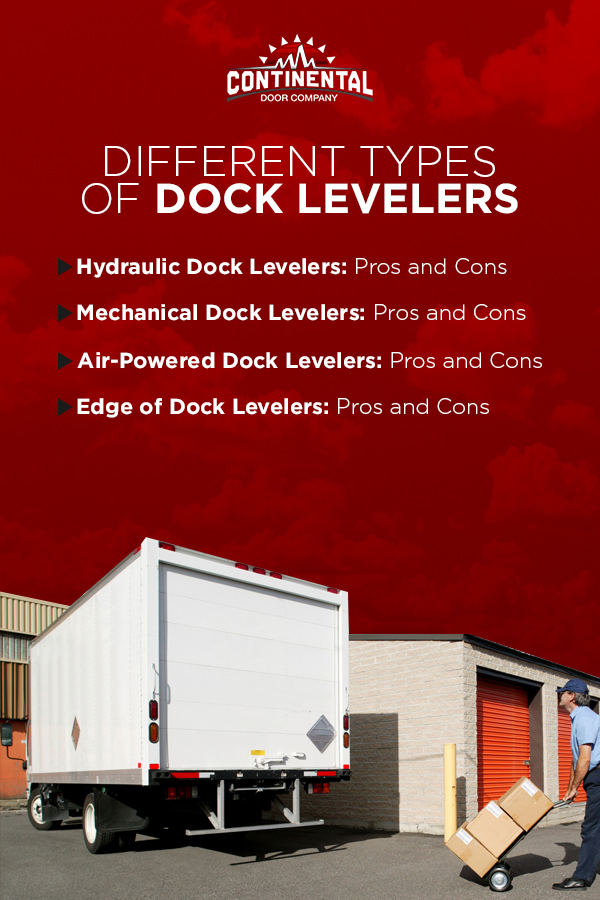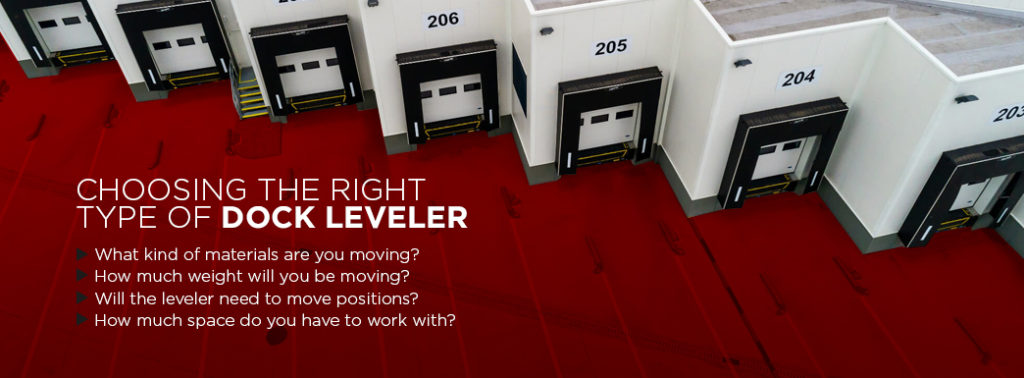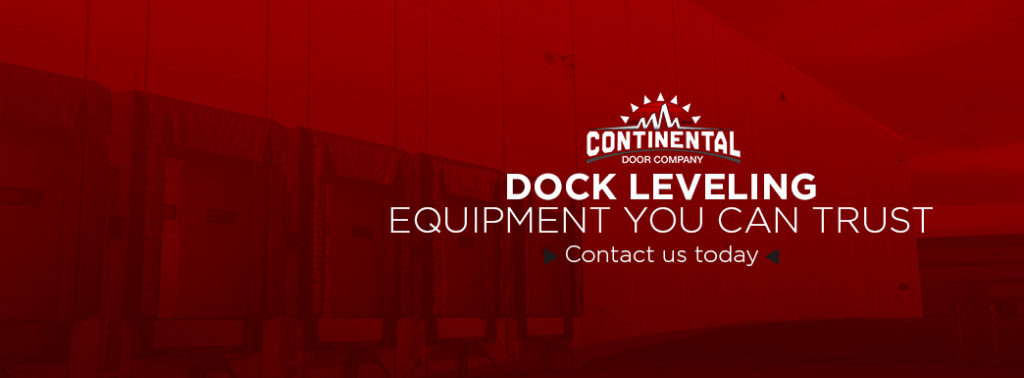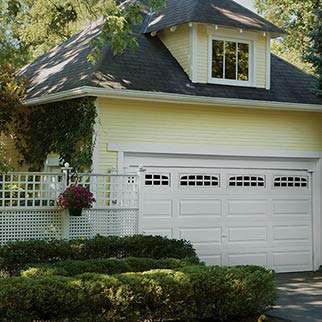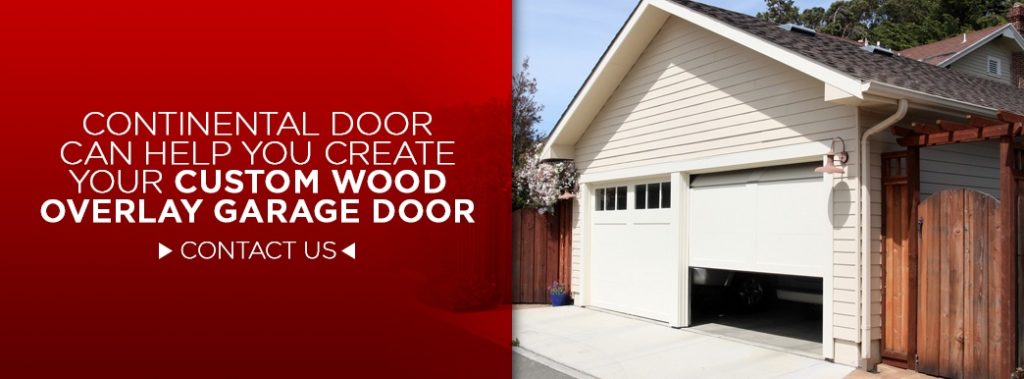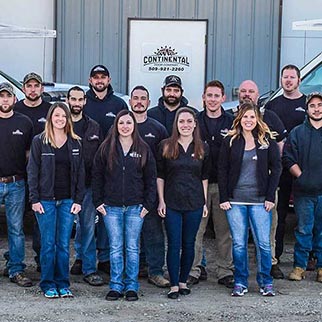When Should I Call for Garage Repair?
Should You Call for Garage Repair?
Your garage door is a complicated piece of equipment that likely goes through multiple uses each day. You expect it to open reliably when you leave for work in the morning, and open smoothly upon your return. With proper maintenance, garage doors can last a long time, but sometimes things happen that result in the need for professional repair. However, it’s not always easy to know when you need to call a garage door repair company, or when you should be replacing your garage door instead of trying to get it fixed. This guide will help you decide when it’s time to call for garage repair or replacement.
Why You May Need to Call for Garage Repair
A variety of situations call for the help of a professional. The following are four common instances where you shouldn’t attempt to make repairs yourself.
Damaged or Broken Lift Cable
This issue is most common in older garage doors that have been out of use for a while. You will find the lift cables on either side of the garage door, where each one wraps around a drum. When the door alignment shifts for any reason, the cable can’t align correctly within the drum. This issue can lead to the cable breaking without much of a warning.
A broken lift cable will result in the weight of the garage door transferring completely to a single side. When this happens, one side of the door will appear to close normally and get to the ground, while the other side stays ajar. This problem is typically the result of failing to schedule regular inspections and maintenance.
Visible Damage and Impact to Garage Door
Impact, whether from something as small as a soccer ball or as significant as a car, can cause real damage to your garage door, especially if it’s an older one or made from low-quality materials. An impact hard enough to make a visible dent in the door is also strong enough to damage components inside it.
Weather Exposure
Exposure to the elements and inclement weather can cause premature degradation of door panels that’s not only unsightly, but can affect how the door functions. High winds and exposure to sunlight or mildew damage panels and cause the door to look worn down. The longer you let weather-related damage persist, the weaker the garage door becomes over time.
Garage Door Is off Track
Track misalignment is one of the more common reasons to call for garage door repair. The most common thing that causes a door to go off track is bolts on the horizontal tracks coming loose, which causes the bracket to move around in response to the vibrations that happen during typical use. When tracks become misaligned, there is a significantly increased risk that the rollers will come off.
If a door’s horizontal tracks consist of low-quality material, even moderate impacts can bend them, and the door can fall. Calling in a repair service will get your door back on track safely, restoring smooth function. You can also have them determine whether it’s appropriate to replace old tracks with stronger or better-designed ones. For example, you may want higher-gauge steel or tracks reinforced with angle iron.
Other Potential Garage Door Repair Scenarios
Here are some additional scenarios in which you may or may not need to call for repair, depending on how much you know about how to fix garage doors.
- Broken springs: The springs in your garage door are always under pressure, and you’ll know if one breaks by the loud bang you will hear. Damaged springs may be the culprit when the garage door opens a little, then stops. Only professionals should handle this repair, due to the inherent safety risks involved.
- Broken hardware: Hinges are the most typical piece of hardware to break or get damaged in a garage door. If you only need to replace one, you may be able to do it yourself, but if there are multiple hinges or other pieces of hardware that need repair, it’s best to call a garage repair company.
- Broken or cracked door panels: When an impact is strong enough to crack or otherwise break panels, you won’t be able to repair them yourself. Due to the weight of these panels, it takes two or more people who know how to fix garage door panels safely.
- Broken wheels: Wheels will sometimes lock up and stop turning altogether, necessitating full replacement. It is easy to bend the door’s track or accidentally damage other components while attempting a DIY repair of the wheels, and it’s one of the more dangerous parts to replace.
- Missing or damaged weatherstripping: Putting in new weatherstripping is usually OK to do by yourself if you are only installing it on the bottom or sides of the door. For maximum effect, however, you should also have an expert install weatherstripping between the door panels.
- Broken door opener: There are a lot of complex moving parts within your garage door opener, so unless you’re doing something simple like replacing the battery, it’s best to call the professionals.
Should I Repair or Replace My Garage Door?
A variety of repairs are straightforward for a technician to fix quickly. However, sometimes it’s more practical to go for a full replacement of the door. Here are three situations where you should consider whether garage door repair or replacement is the better option.
1. Long-Term Malfunctioning
Typically, if your garage door suddenly breaks, it will be due to an isolated issue you can have fixed once and left alone. However, you may end up needing to replace your door if it hasn’t been functioning correctly for a lengthy period. This problem can happen when there is a slight issue, like a small misalignment, that goes unaddressed for weeks or months. Even a little misalignment can cause significant premature wear and problems for the lift mechanism after weeks of opening and closing.
2. Severe Damage to the Garage Door
Having one panel replaced is not a big deal and is a fairly common repair. When you have damage to more than a single panel, however, you will quickly find it may be more cost-effective to get a whole new door. Doing so also allows you to choose a more durable material that will resist a higher caliber of impact or weather damage in the future.
3. The Garage Door Is Getting Old
The older your garage door is, the more you should consider having it replaced rather than repaired. Older doors will only become more prone to breakage over time, so repairing yours may end up being a waste of money if it is going to fail again soon anyway. A repair technician can evaluate your door for age-related wear and tell you whether it’s worth it to fix, or if you are better off getting a new one.
4. The Garage Door Is Slow
While all garage doors open at a measured pace, an exceptionally slow door can be a sign that you need a replacement. If you notice the garage door won’t open immediately upon pushing the button on the remote, or the speed of opening and closing has diminished significantly over time, you may need to replace it.
5. The Garage Door Is Noisy
Some noises clearly indicate it’s time to fix or replace a specific part, but others are vaguer and may indicate that the whole door and system need replacement. If you hear any banging, squeaking, grating, crunching or grinding, it’s time to call and have a technician evaluate the situation.
When to Call a Garage Door Repair Professional
Unless you have extensive knowledge of how to fix garage door issues, it’s a good idea to call a professional anytime you notice something going wrong with your door. Garage doors weigh hundreds of pounds, and the springs they contain can also cause severe injury to hands or other limbs that get in the way.
It’s also possible that by tinkering with your garage door, you will make the issue worse and more challenging to fix. Although online tutorials can help you with straightforward repairs like a battery replacement, there is no substitute for formal training on these complex systems. However, there are some things you can do before calling a repair professional to give them better information and make repairs go more smoothly.
- Visually inspect your door: Check it for damage like dings, dents or cracks. Ensure no outside light comes through the bottom or sides, and note any spots where the door isn’t sealing correctly.
- Check the hardware: Look closely for any rusting or other damage to the lift arm, springs and hinges.
- Inspect the tracks: It’s usually easy to spot misalignment or bending in the door’s tracks. When you open or close the garage door, the wheels should roll smoothly along the track.
- Inspect the supports: It’s essential to ensure all anchor screws are firmly in place on the overhead tracks and door supports.
- Replace remote batteries: Be sure to put new batteries in your automatic remote at least once a year. A surprising number of people don’t think to try this first when the remote stops working.
- Lubricate hardware: Proper lubrication keeps hinges opening silently and wheels rolling smoothly. Be sure to ask your technician what products are appropriate for use on your door.
- Wash the door: Washing your garage door now and again helps remove dirt and debris that can clog up hinges and cause other issues. Don’t use a power washer, as it might take the paint off the door. Instead, use a mild product like car wash soap along with your garden hose’s spray attachment.
Doing these things regularly will help you become more familiar with your garage door, allowing you to spot problems more quickly and call swiftly for professional repair or installation of a new door.
3 Signs You Need a New Garage Door
Not everyone can confidently determine when it’s time to invest in a new garage door. It’s a crucial decision, so here are three signs that all point to getting a garage door replacement instead of repair.
1. Diminished Curb Appeal
Your garage door takes up a lot of real estate on your home, and most garages directly face the street. An old, outdated door can detract from your home’s appearance. Conversely, having a garage door replaced will spruce up your house and provide a 94.5% return on investment.
2. Frequent Worry
A garage door should work right every time you use it. If you find yourself worrying about whether your door will act up, or won’t open at all, you should consider replacing the unit with a new one that won’t be a source of stress.
3. Lack of Safety or Security
The older your garage door is, the less likely it is to have safety features you can find in today’s doors. In addition to features like motion sensing and auto-reverse, new doors can offer encryption for your opener, lock-out to disengage the remotes and more. A new garage door will improve the overall security of your home.
Home Insurance and Garage Doors
What’s the connection between home insurance and garage door replacement? Will home insurance cover the cost of repairs or a new garage door? Generally, it depends on the source of the damage.
- Damage from vehicles: Most home insurance policies will cover damage done when you or one of your family members drives into the door. If someone else drives into the door, their auto liability policy will cover the damage.
- Weather damage: Homeowners’ insurance usually covers damage caused by weather like high winds or hail, at least in part. Be advised, though, that the typical policy does not cover several types of natural disaster damage. Flood and earthquake damage, for example, usually require specific policy additions.
- Break-ins or vandalism: Check your policy for a clause that covers “malicious mischief.” This category of damage includes actions like breaking windows or painting graffiti on the home, including the garage door. If strangers maliciously damage your garage door, your insurance should cover you.
- Wear and tear: If damage to your garage door is the result of typical wear and tear, or even poor maintenance, insurance will not cover repairs.
Always read your policy or check in with your insurance agent to see if your home insurance can partly or fully pay for garage door repair or replacement.
Why Choose Continental Door for Your Garage Door Repair?
Having a garage door repaired can be stressful if you don’t choose the right repair company. Continental Door is proud to offer courteous and professional service that makes it easy to get your garage door functioning flawlessly. Whether you need maintenance, repairs or are looking for a new garage door in the Spokane, Wash., area, Continental Door is ready to provide you with the most effortless experience possible. If you’re interested in any of our garage door services, contact us today.
Request Garage Door Repair Now
What Is a Dock Leveler?
Your warehouse or dock has a lot of moving parts to it. One essential component of this bustling scene is a dock leveler. This handy piece of equipment bridges the gap between a vehicle and the warehouse floor, allowing industrial trucks and their cargo to be easily transported in a commercial space. Dock levelers are a must-have for most warehouse spaces, and even though the equipment might not be large, there’s still a lot to unpack here. Let’s dive in.
What Is a Loading Dock Leveler?
This height-adjustable platform is a popular way to easily transition between your vehicle and the dock. Since these two heights might not match perfectly, the dock leveler can be raised and lowered to meet the difference. This metal piece of equipment, comprised of several mechanical parts, is a popular way to increase efficiency, convenience and safety when using transportation in a warehouse.
What Is a Dock Leveler Used For?
A dock leveler is primarily used to enable industrial vehicles, such as forklifts, to maneuver in and out of docked trucks. This helps the loading and unloading process to happen safely and smoothly. Additionally, the adjustable feature of most dock levelers allows warehouses to service trucks of all sizes.
Parts of a Dock Leveler
A dock leveler consists of several different components. While they may vary depending on their type — whether they are hydraulic or mechanical — they’re comprised of similar parts. These include a core activation system, a frame and a shim. There are several built-in components for convenience and safety, including a toe guard, bumpers and a lip. The deck assembly is the metal part of the structure that is driven over by industrial vehicles.
Finally, the dock pit is the building’s floor opening that accommodates the dock leveler. Each of these parts works together to ensure a smooth and straightforward transition.
What Are My Dock Leveler Options?
When selecting a dock leveler, you’ve got a couple of different options to choose from. While they all accomplish the same end goal, they have different mechanisms and ways of doing so. The most common and popular options include:
- Hydraulic dock levelers: This type of leveler is stored in the dock pit and is known for providing the most seamless transition between vehicle and dock leveler. Thanks to its smoothness, it helps prevent injuries and minimize damage, leading to optimal safety. Its hydraulic lip and platform positioning makes it a reliable and low maintenance option to consider.
- Manual dock levelers: This version requires someone to manually control the leveler, pulling a chain that moves the deck from its stored position to the platform.
- Vertical storing dock leveler: Because of its upright storage position, this leveler allows the vehicle to dock fully before opening the trailer doors. This feature maximizes door protection, security and environmental control.
- Edge of dock (EOD) leveler: This leveler type is perhaps the simplest. Positioned on the edge of the dock, it works well for vehicles that have minimal height difference and allows warehouses to maximize on space because they don’t need to locate and move plates to the correct dock positions.
Purchase Commercial Dock Equipment From Continental Door Today
If you’re on the lookout for well-designed and reliable dock levelers in the Greater Spokane area, purchase yours from Continental Door today. We can connect you with hydraulic, manual and edge of dock levelers, as well as providing essential commercial dock services and equipment for your next dock project. Reach out to us today for a free estimate!
How to Choose the Right Dock Leveler for Your Dock
Choosing a Loading Dock Leveler
Dock levelers are a popular piece of equipment used to provide a transitional bridge between the dock and industrial vehicles. This allows other vehicles, like forklifts, to load and unload with ease and safety. While there are several styles of dock levelers, each of which offers its own unique advantages, they all complete the same essential function.
If you’re considering incorporating a dock leveler into your equipment list, you’ll want to think through a few factors before making your decision. The information below provides a few guidelines to help choose the right dock leveler for your warehouse dock.
Kinds of Dock Levelers to Consider
There are a few commonly-used types of dock levelers, each operating with unique variations. These dock leveler styles include:
- Hydraulic: Popular for its easy use and seamless vehicle-to-dock transitions, this portable dock leveler has many advantages. It contains a hydraulic cylinder that raises and lowers the deck, controllable with a push-button device for convenient operation. They’re generally versatile and require less maintenance than other types, explaining the higher cost.
- Mechanical: The most common loading dock choice, this leveler type operates with a mechanical spring that forces or restrains the leveler. It doesn’t require power to run and is generally cheaper than the hydraulic alternative — but runs up a higher bill in overall maintenance.
- Edge of dock (EOD): With no need for an installation pit, edge of dock (EOD) levelers are easy to operate and cost less than pit dock levelers. However, because they’re installed directly into the edge of a dock, they offer little versatility and limited range.
Which One Is Best For You?
To determine the best dock leveler for your needs and warehouse space, you must identify several different factors. All dock leveler types accomplish the same end goal. However, their style of operation, convenience and storage needs can differ widely. Consider these specifications before deciding which route may best fit your needs.
Price of Dock Levelers
Examine your budget and consider how much you are able to spend on your dock leveler. Each option is priced differently, with the hydraulic dock leveler’s price tag being the largest and the end of dock leveler generally the most affordable. This range of price tags has obvious reasons — including the levels of versatility, safety and efficiency, for example — but is certainly one to weigh before purchasing.
Dock Leveler Maintenance Cost
The initial cost of purchasing and setting up your dock leveler is just one number to consider. Like any piece of machinery, your dock leveler will likely need maintenance over time to ensure it continues working at maximum capacity. Neglecting its maintenance may lead to costly repairs or replacements down the road.
Hydraulic levelers, for example, typically cost more upfront but require less maintenance over time thanks to their design. Mechanical systems cost less, but they generally need more preventive care and service in the long run.
Dock Leveler Functionality
Depending on the operations of your warehouse, you may be using the dock leveler daily or multiple times a day. Consider how frequently it may be used as well as its functionality and ease of operation. It should be a device that your employees can learn to use easily as part of their daily tasks without slowing productivity.
Hydraulic levelers are popular because of their simple functionality, using push-button controls to move and modify the leveler. This keeps employees from exerting significant physical effort to use a leveler. If this is not something used frequently, however, you may be interested in considering the more budget-friendly manual option.
Dock Leveler Size and Load Capacity
Consider the size and shape of your dock space, as well as the kinds of vehicles you’ll be working with. Dock spaces with only a limited amount of room might benefit from an EOD leveler, whereas larger spaces could benefit from a more versatile option. If you’ll be using the leveler to support heavy loads, ensure it can handle the weight of its cargo. Consider the size and capacity of your warehouse dock and loads before settling on a certain leveler.
Order Your Dock Leveler From Continental Door Today
It’s a lot to consider, but once you’ve thought through the details and decided which leveler will work best for your budget, capacity, dock space and operational needs, you’re ready to purchase the right dock leveler. Continental Door is here to help make it simple. We can provide you with quality dock levelers — hydraulic, manual and EOD — as well as commercial dock services and equipment to get you ready for your next big project. Contact us today for a free estimate.
How Weather Affects Your Garage Door Functionality
The Impact of Weather on Garage Doors
Weather in its many forms can be one of the most unpredictable game-changers for your garage door. From summer heatwaves and tornadoes to winter snowstorms and wind, the elements can certainly take a toll on your garage door, impacting its functionality over time.
While you can’t eliminate the effects of weather, being prepared for its impact can help you stay on top of servicing, maintenance and repairs — and keep your garage door operating no matter what Mother Nature throws at it.
How Heat Affects Garage Door Functionality
Sunlight and heat can have a major impact on your garage door functionality. The more intense the heat, the more drastic the effects will be. The glare of the sun can interfere with your door’s photo-eye, causing it to react as though there is an obstruction and preventing you from closing the door. A shade or small sun deflector around the photo-eye can help prevent this.
The warmer temperatures and humidity can also wreak havoc on your electronic controllers, causing them to work abnormally or perhaps stop working at all. These may need repair or servicing if this occurs.
Finally, the moisture and humidity can cause warping and deterioration of wooden garage doors. To counter this, consider applying a protective topcoat during the summer or having your doors serviced during the hotter months.
How Cold Weather Affects Garage Door Functionality
Of course, hot weather is not the only danger — cold weather can leave its mark on your garage door, too. Melted snow is a major winter threat, often causing your garage door to freeze shut. Prolonged wet and cold weather can cause swelling in your garage door’s openers and door frames, leading to hindered functionality and damage over time. Low temperatures may also thicken your door jamb’s lubricants, making it difficult to open and close.
To counter these cold-weather effects, make sure you’re preparing your garage door for the season. Use all-weather lubricant on door jambs and keep a close eye out for brittle or weakened springs. You’ll also want to keep your garage clear of any snow or pooling water and keep gutters clean so ice can’t form.
How Does Extreme Weather Affect Your Garage Door?
Extreme weather can happen unexpectedly at any time around the year, making it difficult to adequately prepare. From extreme fluctuating temperatures to storm damage and flash flooding, each type of weather can lead to door warping, malfunctioning technology, damaged hinges and much more.
Your garage door should be impact-resistant to minimize the potential of extreme weather damage. If you live in an area of the country prone to high winds or other extreme weather, consider installing a bracing kit for your garage door or investing in a WindCode-rated door to help withstand extreme weather events.
What Is Considered Extreme Weather?
Extreme weather comes in all shapes and sizes, any of which can have a damaging impact on your garage door. Be on the lookout for severe conditions such as:
- Hurricanes
- Wind
- Rain
- Thunderstorms
- Tornadoes
- Floods
By installing the highest quality doors and ensuring they are regularly serviced and prepared for the season, you’ll be well on your way to lasting doors year-round. Garage door maintenance is crucial to helping them handle fluctuating temperatures and weather. If your door does sustain damage as a result of extreme weather conditions, garage door replacement is an option to consider.
Request Garage Door Service From Continental Door
No matter the season, nature can leave its mark on your garage doors. From water damage and freezing during the winter to humidity and heat-related issues in the summer months, the seasons make it vital for you as a homeowner to stay diligent when it comes to your doors. Continental Door can help provide the ultimate service year-round, preparing your door for weather changes and performing repairs when necessary.
If you’re in the Greater Spokane area and in need of garage door replacement, service, maintenance or repair, we’re here to help. Reach out to us today to request service or receive a free estimate.
Contact UsHow Often Should a Commercial Door Be Serviced?
Servicing a Commercial Garage Door
Your garage door is the gateway to your business. While residential garage door checkups are important too, regular servicing is essential when it comes to keeping your commercial doors running properly. As one of the most important ways to keep the ins and outs of your commercial property running securely and efficiently, it’s crucial to keep your garage doors in top shape. After all, servicing your door regularly is much more cost and time-effective than having to repair a broken one.
How often should your commercial garage doors be serviced, and when do you know it’s time for a checkup? We offer the lowdown below.
How Often Should Your Commercial Doors Be Serviced?
There are several factors that determine the frequency of commercial door checkups. Identify how your garage door stacks up on these features and you’ll gain a sense of how often yours should probably be seen and serviced.
Usage Frequency of Garage Door
Unlike residential garage doors, which may be used just a few times a day, commercial doors are often used extensively throughout the day. The more frequently you use your doors, the closer you need to keep an eye on their service dates.
Commercial doors that are only used once a day or less may require just the recommended annual checkup. Doors that see heavy traffic should receive quarterly servicing to keep them running smoothly and treat any issues before they need major repairs.
Wear & Tear on the Garage Door
If your commercial doors have received any damage, you’ll want to have them serviced to ensure there aren’t any problems that go untreated. Any cracks or dents caused by collision or forklifts can worsen over time, and may eventually cause major issues with your door. You should also keep an eye out for the inevitable wear and tear that comes along with frequent use. If your door is in a commonly-used area, aim for quarterly checkups.
Quality of the Garage Door
If you have high quality, long-lasting garage doors installed, they may require less upkeep than a door without the same caliber of design and material. If you notice your door is not operating to its utmost quality, call in a service checkup. Tell-tale signs of questionable quality may include improper alignment, an ineffective photo eye or unusual noises.
Location of the Garage Door
Is your door in a high-risk area that sees frequent use? If so, it may be more prone to dents, scratches and other damage. In this case, you’ll want to consider regular maintenance more frequently than an annual checkup. Additionally, high-risk areas may include zones that have been tampered with or faced attempted break-ins in the past. You’ll want to up your door security measures and ensure it is regularly inspected and serviced as a safety precaution.
Preventive Maintenance: How Often Do You Need It?
We recommend a thorough annual maintenance check to assess every aspect of the door and make any necessary repairs. If your commercial door is heavily used, in a high-risk area of the garage, is low-quality or has been damaged, you should consider ramping up your preventive maintenance to quarterly or twice a year. This will help to catch any issues as they arise and prevent you from having to slow your production later down the line to make major repairs.
Choose Continental Door’s Commercial Door Service
Continental Door offers around-the-clock servicing for commercial doors. We’re always a phone call away in the case of a door emergency, and provide high-quality maintenance services to keep your doors in premium condition. Request maintenance service or receive a free quote today.
Contact UsEverything You Need to Know About Leveling a Loading Dock
Loading docks are bustling centers of activity with a host of moving parts. A crucial piece in these exchange centers is loading dock levelers. Dock levelers are attached to a dock face or installed into a loading dock pit to bridge the gap between incoming vehicles and warehouses.
The importance of leveling a dock is multifaceted. Primarily, leveling allows industrial vehicles like forklifts to drive in and out of docked trucks quickly and safely — making the unloading process as efficient as possible. Dock levelers also adjust to reach up or down to different truck heights. This diversity enables the dock to service a wide range of trucks. If you’re working on a loading dock project or looking for the best way to level your docks, here are some things you should know.
Table of Contents
- Standard Dock Height in the United States
- Most Common Ways to Level a Dock
- Different Types of Dock Levelers
- Choosing the Right Type of Dock Leveler
- Importance of Quality Dock-Levelers
Standard Dock Height in the United States
Dock height plays an important role in the type of leveler you use and how safe your loading dock is. Most United States docks are between 44 and 48 inches high, since semitrailers, straight trucks and flatbeds all have bed heights that are close to this range. Some loading docks and some types of trucks, however, are outside of this height range. The beds of refrigerated trucks, for example, are typically between 50 and 60 inches tall, while city delivery trucks, high cube vans and panel trucks are typically shorter than 40 inches.
Consider the types of trucks your dock receives and find the midpoint of their bed heights. The goal for dock height is to minimize the inches between your dock and the trailers it serves. Dock levelers are great for bridging height gaps, but they work most efficiently when they are close to flat.
You’ll also need to consider whether the loading dock driveway approach will be level or have an inclined or declined ramp toward the building. Your dock driveway orientation affects trailer proximity to the dock wall in different ways:
- Level Driveway: The gap between the trailer and dock wall is the same from top to bottom.
- Inclined Driveway: The trailer is further away from the dock wall at the top and closer at the bottom.
- Declined Driveway: The trailer is closer to the dock wall at the top and further away at the bottom. If improperly configured, this type of driveway can cause dock wall collisions.
In a declined driveway approach, if your driveway slope is too steep and the dock has inadequate bumper projections, truck tops may hit the building while docking. This is a serious safety concern for both the dock structure and trailer.
To avoid trailer and dock wall collisions, ensure that the declined driveway slope and projection of the dock are such that trailer tops are always at least four inches away from building walls. Creating an even surface for forklifts to drive across will keep workers safe and allow the dock levelers to perform effectively.
Most Common Ways to Level a Dock
The most common kinds of dock levelers are designed to fit into some form of dock pit. When leveling a dock, there are three main ways to create this pit. Builders may choose to begin with a preformed pit, use a pour in pan method or utilize a pit kit. Each method has pros and cons based on your timeline, building plans and preferences.
1. Preformed Pit Method: Pros and Cons
The preformed pit method involves constructing and reinforcing pits for dock levelers in the dock building process.
Pros of a preformed pit include:
- Perfect Fit: When using a preformed pit, you know your pit will be the right size for the type of leveler you’ve selected.
- Convenient: You won’t need to adjust your dock in any way before installing the leveler. Once the pit is constructed, you can add the leveler.
Cons of a preformed pit include:
- Necessary Forethought: Not everyone has the luxury of starting with a new loading dock. The preformed pit method is suited for those in the dock-construction phase. You also have to know what type of leveler you want to install to size the pit correctly. This amount of forethought may be tricky depending on how much you know about the dock before it is set into action.
- Longer Installation: While you are all set to install the leveler right away, waiting for the pits to be constructed can take a long time.
2. Pour in Pan Method: Pros and Cons
Pour in pan installation methods come with a pan that serves a pit. The pan is welded to the dock leveler, making the installation a quick process.
Pros of a pour in pan pit include:
- Reduced Installation Time: Installing a pour in pan leveler is as simple as placing and centering the leveler and pouring concrete around the outside to secure it. This process is simple and ideal for docks installing multiple levelers at once.
- No Preformed Pits: Because pour in pan levelers function as their own pits, you don’t need precisely measured pits. This versatility eases the installation process.
Cons of a pour in pan pit include:
- Required Preparation: For pour in pan levelers, you still need to ensure there is a notch cut in the foundation wall to give the leveler a place to sit. In addition, you need a concrete slab for each leveler to sit on.
3. Three-Sided Pit Kit Method: Pros and Cons
Three-sided pit kit levelers come with pre-made steel panels that are fastened together on-site.
Pros of a three-sided pit kit include:
- Perfect Size: Because these pits are assembled on-site, you are guaranteed to have the right-sized pit for your leveler.
- Reduced Cost: Using a pit kit costs less than traditional wood forms.
Cons of a three-sided pit kit include:
- Minimal Customization: Because these kits are pre-fabricated, it may be difficult to customize other features of your dock.
Different Types of Dock Levelers
Once you’ve established a dock pit, you can begin selecting a type of dock leveler. There are several dock leveler varieties, and each provides certain advantages depending on your situation. In general, dock levelers are operated with electrically-powered push-buttons or with spring-loaded mechanics. Push-button models tend to be easier to operate and are more ergonomic — however, they may not be the best choice if your dock doesn’t have nearby electrical outlets.
Here is a breakdown of each leveler type and its pros and cons:
1. Hydraulic Dock Levelers: Pros and Cons
Hydraulic dock levelers get their name from the hydraulic cylinder that raises and lowers the deck and operates the lip.
Pros of a hydraulic dock leveler include:
- Versatility: A hydraulic dock leveler comes in a variety of configurations and has several power options.
- Economic: These types of levelers tend to have lower service and maintenance costs overall.
- Push Button: Hydraulic levelers are push-button enabled, making them safe and easy to operate.
Cons of a hydraulic dock leveler include:
- Initial Cost: Hydraulic dock levelers are usually more expensive than other types.
- Electricity: This dock leveler requires a power source nearby and will contribute to your overall electric bill.
2. Mechanical Dock Levelers: Pros and Cons
Mechanical dock levelers tend to be the most common choice for loading docks. Mechanical spring systems force the leveler upward or restrain the leveler depending on its position.
Pros of a mechanical dock leveler include:
- Initial Cost: Mechanical dock levelers are among the least expensive options for dock leveling.
- Powerless: Because these levelers don’t use electricity, you don’t need to worry about having a nearby power source or an increased electricity bill.
Cons of a mechanical dock leveler include:
- Expensive Upkeep: These levelers are typically the most expensive to repair and maintain long-term.
- No Push Button: Workers position mechanical dock levelers manually.
3. Air-Powered Dock Levelers: Pros and Cons
Air-power dock levelers use a pneumatic bag system to move the leveler deck.
Pros of an air-powered dock leveler include:
- Inexpensive Upkeep: When compared to mechanical dock levelers, air-powered levelers are less expensive to repair and maintain and require less overall upkeep.
- Push Button: Air-powered levelers are push-button enabled, making them safe and easy to operate
Cons of an air-powered dock leveler include:
- Initial Cost: Air-powered dock levelers are more expensive to purchase than mechanical dock levelers.
- Electricity: Some electricity is required to power the airbag system in an air-powered leveler. You’ll need a nearby power source, and these levelers will add to your electric bill.
4. Edge of Dock Levelers: Pros and Cons
Edge of dock (EOD) levelers do not always require an installation pit. As their name indicates, these levelers are installed directly into the edge of a loading dock.
Pros of an EOD leveler include:
- Initial Cost: EOD levelers cost significantly less than pit dock levelers
- No Pit Required: If your loading dock doesn’t have any pits, you can install an EOD that doesn’t require a pit.
- Push Button: EOD levelers are push-button enabled, making them safe and easy to operate
Cons of an EOD leveler include:
- Electricity: EOD’s use hydraulic or pneumatic power, which means you’ll need an electricity source nearby, and you’ll pay for them on your electric bill.
- Limited Range: An EOD has a limited vertical operation range, which means it may not be safe to use them unless the vehicles you typically service are close to the loading dock height.
Choosing the Right Type of Dock Leveler
With so many options available, how can you know what type of dock leveler is best for you? The most significant influence over your leveler choice will be your specific loading dock situation. In some scenarios, “cons” listed for each leveler may actually be “pros.” Understanding how your dock functions will give you a clear idea of what to look for in a dock leveler.
Here are some details to consider:
What kind of materials are you moving?
Materials transported through the dock will make an impact on the type of equipment traveling over your leveler. Light materials may be transported manually, meaning the dock leveler will only have to support human weight plus material weight. Heavier materials may be transported by forklift. This means your leveler will need to be strong enough to safely support the specific forklifts driving over them in addition to the material weight.
How much weight will you be moving?
Your materials and transportation method will determine the amount of weight traveling over your dock leveler. According to industry group MHI, over 90% of dock levelers have a weight capacity range of 25,000 to 80,000 pounds. In any case, you’ll want a dock leveler that caters to the heaviest materials and equipment you’ll be transporting. Once a dock leveler is installed, you can’t add weight capacity to it. Be sure to give yourself enough capacity to account for the potential of heavier equipment or materials in the future.
Will the leveler need to move positions?
If your dock services a wide range of vehicle heights, you’ll need a leveler that can reach up or down to them. In this scenario, an EOD leveler may not provide the necessary range, and you may want to opt for a pit leveler. If your dock leveler consistently needs to be positioned at an incline or decline, you might need to pick a leveler with more capacity. The greater the degree of incline in your leveler, the greater the impact your equipment will have on it. If your dock experiences a variety of vehicle heights, you’ll want to pick a leveler with the versatility to service them all safely.
How much space do you have to work with?
The loading dock’s space availability may impact your dock leveler selection. Preexisting docks with limited space may want to pick a space-efficient EOD leveler. Docks with more space may enjoy the versatility of a pit leveler. Make sure you match your space requirements with your weight and function requirements when making a selection. If you’re a contractor designing or building a loading dock, be sure to give ample space for the type of dock levelers your clients need.
Other considerations:
Price of dock levelers
Examine your budget and consider how much you are able to spend on your dock leveler. Each option is priced differently, with the hydraulic dock leveler’s price tag being the largest and the end of dock leveler generally the most affordable. This range of price tags has obvious reasons — including the levels of versatility, safety and efficiency, for example — but is certainly one to weigh before purchasing.
Dock leveler maintenance cost
The initial cost of purchasing and setting up your dock leveler is just one number to consider. Like any piece of machinery, your dock leveler will likely need maintenance over time to ensure it continues working at maximum capacity. Neglecting its maintenance may lead to costly repairs or replacements down the road.
Hydraulic levelers, for example, typically cost more upfront but require less maintenance over time thanks to their design. Mechanical systems cost less, but they generally need more preventive care and service in the long run.
Importance of Quality Dock-Levelers
Use the answers to these questions to help narrow your leveler selection. To ensure proper loading dock leveler safety, navigate the selection process with long-term consequences in mind. Though the initial cost of certain leveler types may prompt you to consider a less expensive option, loading dock safety should be a top priority.
In line with industry trends and best practices, many companies are choosing safe, long-lasting dock equipment rather than low-cost equipment. Certain high-cost levelers require less overall maintenance, making them a quality investment. Don’t let cost drive your leveler selection. Instead, focus on finding a safe, functional option with the longevity to serve your facility well.
Dock Leveling Equipment You Can Trust
Leveling a loading dock is a serious task. When you’re shopping for dock levelers, you want a high-quality solution that fits your needs. At Continental Door, we’re committed to finding those solutions with our excellent products and outstanding customer service. Shop our selection of loading dock essentials for safe, effective equipment that maximizes your dock’s productivity.
Contact us today to learn more about our loading dock equipment or to request a free estimate for your project!
Contact UsRequest More Information About Dock Leveling Equipment
Related Posts
Tips for Improving Loading Dock Safety Everything You Need to Know About Automated Security Gates Keeping Your Employees Safe from Your Commercial Garage Door What Should You Be Looking for in a Commercial Garage Door?
4 Tips for Insulating A Detached Garage
Tips for Insulating a Detached Garage
When it comes to first impressions, you know that the appearance of your garage door is important. But some homeowners don’t realize the importance of making sure a garage door is properly insulated as well.
Here are a few tips for insulating a detached garage:
1. Get an estimate ahead of time.
How much does it cost to insulate a garage? The answer depends on the method you choose. While installing a new, insulated garage door is a significant investment, it can greatly increase your home’s value. Continental Door offers free estimates in the Greater Spokane area.
2. Decide what you’re going to use your garage for.
If you’re only using your garage to store your vehicle, you might not need as much insulation as you would if you were planning to convert the garage into a functional living space.
3. Research different types of materials used for insulation.
You may want to use different materials for different areas of your garage. This may also depend on what you plan to use the space for.
4. Decide whether you want to heat your garage.
Many homeowners choose not to heat detached garages because they require an independent heating system. If you plan to spend a lot of time in your garage, heat may be a good investment — and if this is the case, you’ll want to invest in proper insulation as well.
Keep these tips for garage insulation in mind, and read on for ideas about ways to use an insulated garage space as well as information about different types of insulation.
Why Insulate Your Detached Garage?
Insulating your garage is an excellent investment, no matter what you use your garage for.
- Use your garage as a workspace. If you’re planning to spend any extended amount of time in your garage, insulation is essential to your comfort.
- Use your garage for storage. A garage is a valuable storage space for many homeowners, but some materials cannot withstand extreme temperatures. To protect your possessions year-round, invest in garage insulation.
- Create a livable space. With a few additional renovations, you can turn your garage into a livable space — maybe a guest bedroom, office or home gym. This is a great investment if you have an alternative space to store your vehicle.
Types of Insulation for Your Garage
- Fiberglass insulation. Fiberglass is an effective insulation for garage walls and ceilings.
- Rigid foam insulation. Polystyrene and polyisocyanurate are two types of rigid insulation. This type of insulation is common in garage doors.
- Spray foam insulation. Spray foam is a good choice if you’re renovating your garage to create a living space.
One of the most effective ways to insulate a garage is to upgrade to a new, insulated garage door. Continental Door offers a wide variety of insulated Clopay® garage doors.
Insulate Your Garage Door Today
An insulated garage can be a valuable space for anything from storage to working on a vehicle in comfort. To make the most of this space, it’s best to get professional assistance in choosing and installing the right insulation for your needs. Continental Door proudly serves home and business owners in the Greater Spokane area, and we offer full design services and free estimates.
Visit us today or request an estimate online to see how a new, insulated garage door can improve your home.
Contact UsWhat Is a Garage Door Emergency Cord?
What is a Garage Door Emergency Cord?
Most days, your garage door opener functions smoothly, and you never think twice about what would happen if power were suddenly lost or your system malfunctioned. If your garage door opener malfunctions, you may need to use the release to open and close your garage door. Additionally, if the power is out and you need to leave for work or an event, you’ll need to use the emergency cord to get your car out of the garage.
A garage release cord is a safety feature that disengages your opener from your door, turning your garage door back into a manual one. You may have noticed the cord with the red handle dangling from your door but never had an occasion to use the release. The feature is actually quite easy to use and re-engage once the issue has been resolved.
How to Use the Emergency Cord on a Garage Door
Some people might be a little afraid of a manual garage door because they are so used to a machine doing the lifting. Using the red release lever is quite easy, though, and quality garage doors slide easily up and down.
Start with your door in a down position. Never disengage the door when it is in the up position — if the spring is broken, the door may fall suddenly and create a dangerous situation or cause damage to your door.
Pull the garage door’s red release cord. The trolley, which attaches to the opener mechanism will disengage from the automatic opener. This turns your door back into a manual one. You can now open and close the door. Keep in mind that functions such as the sensors that stop the door when something is in its path will not work during this time, so take the necessary precautions to avoid injury.
How to Reattach the Garage Door Emergency Pull
Once the power is restored or you’ve determined you need to repair or replace your garage door opener, you may wonder how to re-engage the garage door opener.
Again, start with the garage door in the down position. If your unit is newer, it may have an automatic reconnect feature that initiates when you hit the open button on your remote. If your garage door opener doesn’t have this ability, you’ll need to reconnect the trolley to the opener.
Pull the cord down and toward the door. This will typically reconnect the lever. You may even hear it click into place. You can tell by the spring whether the door is connected or not. When it’s disconnected, the spring is extended. When it’s engaged the spring is compressed.
Be sure not to pull on the cord too hard. If it isn’t reattaching, there may be another issue that needs addressing. Tugging too forcefully can cause damage. Test the opener by hitting the button to send your garage door open. If it works without issue, everything is reattached correctly.
When to Call for Help
If your garage door is stuck in the open position, call for help. Never use the emergency release in this position as it can cause harm to yourself, others and the door itself. If you are unable to open your door, there may be other issues that require the help of a professional to repair or replace broken parts. For service in Northern Idaho or the greater Spokane, WA area, contact Continental Door’s 24/7 emergency service.
Everything You Need to Know About Adding Siding to Your Garage Door
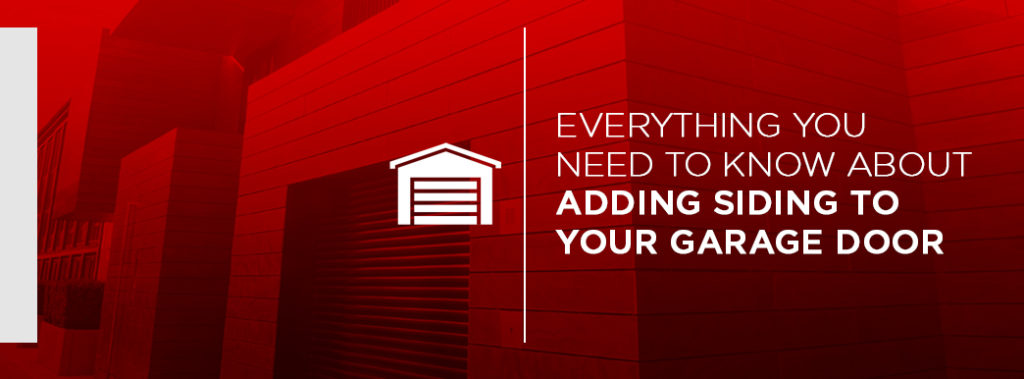
Adding Siding to Your Garage Door
If your garage door needs an update, you can add wood or faux wood siding to your garage door to create a wood overlay garage door. With this technique, you can create a door to complete your home’s sophisticated look.
As you consider how to make your garage door match your home exterior, you can choose a wood design for your garage door to complement your wooden front door. Whether you add siding or buy a custom wood door, you should hire a professional installer to replace or redesign your garage door.
Request ServiceJump to Key Section
- Can You Add Siding to a Garage Door?
- Pros and Cons of Adding Siding to Your Garage Door
- Benefits of Hiring a Professional Installer to Add Siding to Your Garage Door
- Should You Add Siding to Your Garage Door or Purchase a Custom Garage Door?
Can You Add Siding to a Garage Door?
By adding wood siding to a garage door, you can create a wood overlay garage door. Overlaying your garage door with wood can give your garage door more depth to complement and match the rest of your home. Wood siding will adhere to your vinyl garage door with a special type of wood glue.
Pros and Cons of Adding Siding to Your Garage Door
Adding siding to your garage door can give your home a classic look while keeping up with the modern trend. While you can add a wood finish or stain your garage door to give it a wooden appearance, adding siding to your garage door comes with unique benefits:
- Siding offers extra protection: Adding that extra layer could provide even more insulation and protection from the heat and outside damage.
- You can easily customize your garage door to keep up with trends: By adding siding to your garage door, you can create your garage door without having to replace your old one. As the trends change, you can remove your garage door siding and replace it with new siding.
- You can complement the exterior of your home: Home designers suggest coordinating your garage door color and material with your front door. You can complete the sophisticated theme of your home by adding wood or faux wood to your garage door.
There are also drawbacks to adding siding to your garage door:
- Wood can be too bulky: Adding wood or faux wood to your existing garage door could weigh it down, making it difficult to open and close. If your garage door is not designed to handle the extra weight, your siding could damage it.
- Garage doors made of different materials are harder to clean: Wood garage doors are easy to maintain when you have the right equipment and information. If you place wood over a steel garage door, you’ll have to take care of both the wood and the steel pieces.
- Adding siding to your garage door can be complicated: In many cases, purchasing a custom made door instead of adding siding to an existing door will be easier. If you decide to add siding to your garage door, it’s best that you contact a professional garage door installer to handle the task.
Benefits of Hiring a Professional Installer to Add Siding to Your Garage Door
You can install siding on your garage door yourself to create a wood overlay, or you can hire a professional. A professional garage door installer has experience and resources to help you remodel your garage door. Hiring a professional installer to add siding to your garage door may be beneficial to you because:
- A professional installer has experience: If you’ve done home renovation projects on your own in the past, you might be able to create your own siding for your custom door. However, a DIY home project can be frustrating if you are new to exterior design, so you may want to hire a professional who knows what to do. A professional garage door installer typically has years of experience installing and repairing garage doors.
- A professional installer has resources: To create your custom door on your own, you’ll need to buy all the supplies. You also likely need friends or family to help you take on this task of enhancing your home’s curb appeal. A professional will have all the resources and power needed to add siding to your garage door.
- A professional installer has time: While adding siding to your garage door should only take a couple of days, you may have to sacrifice work or a relaxing weekend to put up your siding.
- A professional installer can give you more for your money: A DIY project may save you money if you are experienced. But you will likely pay more money to repair any mistakes you make along the way. A professional installer may cost money, but you know that the professional will do the job right.
As you choose a professional installer to remodel your garage door, you should hire a reputable professional who has years of experience and is highly recommended by previous clients.

Should You Add Siding to Your Garage Door or Purchase a Custom Garage Door?
Instead of adding siding to your existing door, you can purchase a custom garage door. Custom sided garage doors will set your house apart from the rest of the houses on your block. Here are some of the benefits of custom garage doors:
- Extra insulation: In places as cold as Spokane and Northern Idaho, adding insulation to your garage door can also help you lower the cost of your energy bill each month.
- Increased return on investment: Your custom garage door can help enhance your home’s curb appeal and increase your home’s resale value.
- You are in control: When you choose your custom garage door, you can choose the material, finish and design of your door that will complement your home’s design.
If it’s time to renovate your home, consider installing a modern and contemporary garage door. If you would rather have a wood garage door, you can install a door with a wood finish. To prolong the life of your wood garage door, clean it with soapy water and add a stain or finish to it to protect it from extreme weather conditions.
Continental Door Can Help You Create Your Custom Wood Overlay Garage Door
Continental Door has been providing the Spokane and Northern Idaho area with garage door installation and repair services for more than 15 years. We have a wide selection of Clopay® modern garage doors and wooden garage doors to give your home a sophisticated appearance. We can also help you create a custom garage door with or without siding that will complement your home’s exterior.
We are here to answer any questions you may have about customizing your garage door. You can fill out a contact form online or call us at 509.921.2260.
Contact Us4 Things to Know About Installing a Drain in Your Garage
Installing a Garage Drain
Whatever you use your garage for, there is a good chance that you would benefit from having a garage drain. This is especially true for garages that are used for vehicle storage. The garage door is frequently opened and closed, even on rainy and snowy days — and water is likely to run off of cars, bikes, raincoats and boots to pool on the garage floor.
Contact UsA drain is a great solution for this issue, but here are four things you should know before installing a drain in your garage:
- You need to look into local garage floor drain codes. There are different codes and regulations for residential and commercial floor drain installation. Find out what the rules are in your area before you do anything else.
- A garage drain can lower health risks. Pools of water and other excess moisture left in your garage can lead to the development of mold and other potential health risks, including the chance of breeding mosquitoes.
- You can’t pour just anything into a drain. There are specific regulations about what can be poured into a drain in different areas. For example, you should never pour any kind of chemical down your garage drain.
- A garage drain needs to be cleaned regularly. Like any other drain, a garage floor drain needs regular cleaning and maintenance to stay in good working order. Just because it’s out of sight does not mean your garage drain should be out of mind.
What Is a Garage Drain?
Like any other drain, a garage drain is meant to control the flow of water. The key to a successful garage drain is the floor — it needs to be pitched or sloped so that water will run down the drain naturally.
What Is a French Drain System?
A French drain is one garage floor drain option. In a French drain system, a trench lined with gravel and a perforated pipe is used to redirect water away from an area.
Does a Garage Need a Drain?
For residential garages, the answer depends on where your home is located. Many cities do not allow the installation of garage drains. Instead, garage floors may be sloped so that any water can run out of the garage on its own or be swept and squeegeed out. If that water isn’t dealt with, either by a drain or by you, it could make the floor slippery and potentially cause accidents.
Benefits of Having a Garage Drain
- A drain will prevent water from pooling in your garage and save you the labor of sweeping it out.
- You can easily wash your car inside your garage.
- A drain can prevent ice from building up in the winter.
How to Install a Drain in Your Residential Garage
In general, it is a good idea to leave complicated plumbing to experts. However, there are a few steps you should take when you consider installing a drain:
- Check local ordinances before doing any installations.
- Decide whether you want to connect to the sewer system or route the water to a storm drain.
- Make sure the floor is pitched or sloped so that water will run into the drain naturally. If the current slope is insufficient, be prepared to pour new concrete.
Contact Continental Door for Garage Door Services
Adding a drain to your garage is a great way to improve its safety and convenience, but you need to be sure you’re in compliance with city codes before calling a contractor. If so, there are several garage floor drain options you can explore to increase the utility of your space.
Planning to renovate your entire garage? Top it off with a new insulated door from Continental Door. Home and business owners in Spokane, Coeur D’Alene and the surrounding areas can count on Continental Door for high-quality, professional garage door services and expertise. Get in touch today for a free estimate or service request.
Contact Us




